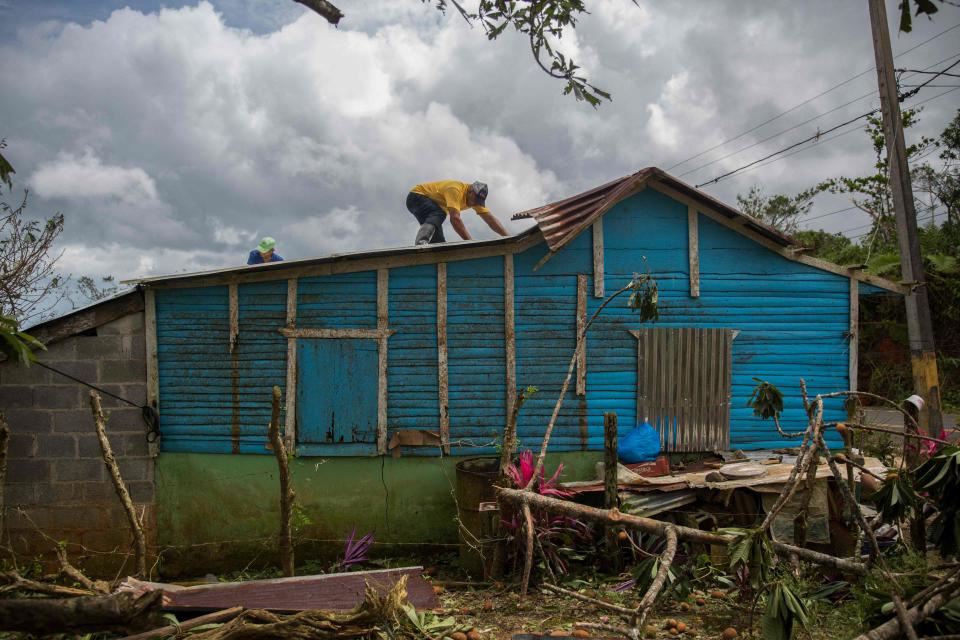How much should I have in my emergency fund? More than you think.
Many Americans struggle with emergency savings. It’s hard to even get started, let alone to amass the three to six months of household expenses we are instructed to save.
Investopedia, the financial media site, has a new report that sheds light on how much emergency savings we really need.
The good news: We now have a hard number to aim for. The bad news: It’s a large number.
A typical U.S. household should have at least $33,000 saved for an emergency, Investopedia reports: $33,110.68, to be exact.
That sum represents roughly four times the amount of money the typical household has in its combined savings and checking accounts, a comparatively paltry $8,329, according to federal data.
“That should be a wakeup call for people,” said Caleb Silver, editor in chief of Investopedia, on the struggle to save for an emergency. “If you think savings are going to get you out of it, you have to have enough savings to get through it.”
The Investopedia team came up with the $33,000 figure by analyzing the average costs of six months of expenses for a household of at least two people.
The biggest category of costs is medical care: The analysis assumes you’ve lost your job, and healthcare gets expensive when you are unemployed.

$33,000 in emergency savings: How it breaks down
Here’s the full breakdown of expenses:
$10,754.63 for medical care: The average cost of single-coverage COBRA premiums for six months, multiplied by average household size.
$10,250 for cars: Average cost to own two vehicles for six months, and to operate one.
$9,137.17: for housing and utilities: Average cost for six months of housing and utilities for renters and homeowners.
$2,968.88 for food: Average cost for six months of groceries.
Investopedia experts stress that their calculus is conservative. It assumes, for example, that your family won’t eat out while coping with its emergency. It also assumes you’ll use only one car.

For some families, $33,000 isn't enough
For some families, especially after a job loss, $33,000 might not be enough.
“You need to understand that you may not get another job for six to 12 months,” said Kelli Smith, director, financial planning at Edelman Financial Engines. “And if you’re a single-income family, you really need to pay attention to what that income need is for that time period that you’re unemployed. It could very well be more than $33,000.”
Millions of Americans struggle to save for emergencies. Federal data suggest about three-quarters of households with bank accounts have less than $33,000 saved, Investopedia reports.
Financial advisers urge Americans to set aside enough emergency savings to cover three to six months of household expenses. That would be enough, in theory, to pay for a major household repair, hospitalization or job loss.
“Inevitably, there’s going to be something that comes up, whether it’s a new roof or losing a job, that’s going to put you into debt,” Smith said. “We need to get into a place where we have good spending habits and good savings habits. Emergency savings is a great place to start building those habits.”
Most of us know we aren't saving enough
Most of us seem to know we aren’t saving enough.
In an annual poll, the personal finance site Bankrate asks consumers if they are comfortable with how much they have saved for an emergency.
Strikingly, the level of financial discomfort with savings seems to rise every year. In 2018, only 37% of adults said they were uncomfortable with their level of emergency savings. That quotient rose to 44% in 2020 and 59% in 2024.
“The increase in discomfort has coincided with the rise in inflation,” said Greg McBride, chief financial analyst at Bankrate. “I think there’s a recognition that the savings you have doesn’t go nearly so far as it used to.”
In Bankrate’s 2024 Annual Emergency Savings Report, 27% of adults report having no emergency savings.
Here’s a breakdown of households by size of their savings account:
No emergency savings: 27%
Savings to cover less than three months’ expenses: 29%
Savings to cover 3-5 months’ expenses: 16%
Savings to cover at least six months’ expenses: 28%
Baby boomers are the most likely to have emergency savings, the survey found, while millennials are the least likely.
If you are one of the 27% of Americans with no emergency savings, here are some expert tips on how to get started.

More: Why the best high-yield savings account may not come from a bank with a local branch
Open a high-yield savings account
Interest rates are up right now, and high-yield savings accounts are paying some of their highest yields in years.
Rates of 4% to 5% have become the norm for competitive high-yield savings in the past two years, in response to the Fed’s dramatic campaign of interest rate hikes to curb inflation.
“A high-yield savings account is a beautiful place for your emergency savings account,” Silver said.
Open a money market account
An alternative to high-yield savings is the money market account. They are offered by banks and credit unions, with federal backing.
Money market accounts generally aren’t as flexible as savings accounts: You may not be able to move money in and out quite so easily. But a money market account should be flexible enough, experts say, for your emergency savings.
Money market accounts were moribund through the low-interest years, but not today. Competitive rates reach the 4% to 5% range.
Make automatic deposits
A good way to build up emergency savings is by making automatic deductions from your paychecks, McBride said. Ideally, you won’t even miss the money.
“Successful saving is about the habit,” he said. “And the best way to establish the habit is to automate it.”
Getting a windfall? Save it
With automatic deposits of $100 here and there, it could take years to build up $33,000 in savings.
Here’s a shortcut: The next time you get an income-tax refund, or a holiday bonus, or any other unexpected windfall, deposit the full sum into your emergency savings.
“When you get a pay raise, when you get a bonus, any income from a side hustle,” McBride said, “that’s an opportunity to put some extra money away.”
This article originally appeared on USA TODAY: How much emergency savings you need, down to the dollar